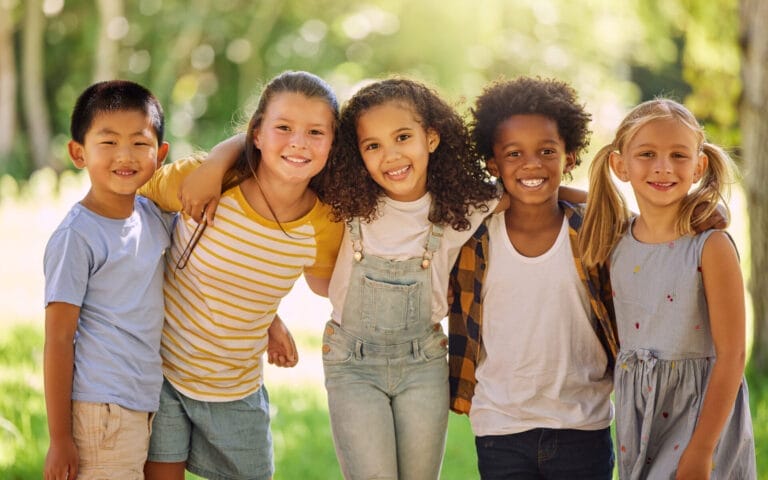
Laughing: More Than Just Good For the Soul
We all know that laughter is good for the soul. However, research has shown that it is also great for the brain. A study that was recently published in the journal Cognition and Emotion asserts that laughter is instrumental in assisting children in learning and mastering tasks.
Funny things are easier to remember. It is for this reason that humor enhances children’s learning. Notice how easily a child can recite lines from a favorite cartoon and incapable of doing the same when it comes to homework. The difference is that cartoons are funny, which is a powerful aid for memory, whereas homework is not.
Robert Kaplan and Gregory Pascoe were among the first researchers to recognize the connection between humor and learning. In their groundbreaking study nearly fifty years ago, they discovered that integrating humorous content into their college lectures had a significant impact on students’ retention.
Several later studies came to the same conclusion (Banas, Dunbar, Rodriguez, & Liu, 2011). The science of humor: the effort we put into interpreting the funny element makes the content around it stick better!
Sesame Street, The popular children’s TV show Sesame Street understood this secret and has harnessed its power for years. Even adults can recall something they saw on a Sesame Street episode decades ago. Whether it’s Big Bird trying to get his friends to believe that Mr. Snuffleupagus was real, or Mr. Grover’s silly games, it’s all there somewhere on the “hard drive.”
It was for this reason that researchers selected Sesame Street episodes to analyze humor’s impact on young children’s retention and engagement. Researchers had kindergarten and first-grade children watch either humorous or non-humorous episodes. When retention of the content was tested, the kids who watched the humorous episodes scored consistently higher.
Reasons Laughter Enhances Learning
The Emotional Reason
The prominent psychologist Abraham Maslow is well known for his “hierarchy of needs.” Maslow’s theory claimed that a person could only respond to higher needs when more basic needs were already met. As any online mental health therapist can bear testimony to, it is impossible to impart a deeper understanding of a child’s problem if that child is struggling with underlying issues in the home and just trying to survive.
After a child’s basic needs for food and water are met, kids then need to feel safe, loved, and have a healthy self-image in the school. Injecting humor into the classroom experience helps children meet all of these needs simultaneously. It helps relax and move the child out of the ‘fight, flight, or freeze’ mode into an area of comfort, and it facilitates an online mental health therapist to work with the child.
What’s more, laughter encourages the forging of relationships with both the teacher and other students, transforming the classroom into a place where children feel they belong and are loved. It can be helpful as well in building the relationship between an online mental health therapist and his/her client. As Maslow observed, when these basic needs are met, learning can accelerate at an astounding rate.
Laughter in the classroom, when used effectively, reduces student anxiety which allows children to increase their participation and focus on the material being taught. Some teachers have found that at the students’ most anxious times, such as just before or even during an exam, a dose of humor can relieve students’ tension and help them perform better. Although the exam is no laughing matter, a little laughter can help!
The Psychological Reason
Various researchers have investigated how humor aids retention from a psychological perspective as well. Berlyne’s groundbreaking study fifty years ago remains the cornerstone of most theories. Berlyne postulated that humor is a two-phase event that involves recognizing an inconsistency and then resolving it.
The effort that is required for this additional processing of information, of first catching the inconsistency and then resolving it, moves the information into long-term memory where it will be stored. However, non-humorous content that is processed with far more ease never moves out of short-term memory and thus is rapidly forgotten. Various studies over the years have validated Berlyne’s theory with clinical evidence (Schmidt & William, 2001; Schmidt, 2002; Wanzer et al., 2010).
Neuroscientific Reason
Looking at laughter through the lens of neuroscience, humor’s impact on learning is driven by the chemicals the brain releases when we experience humor, more specifically when we laugh. The neuroscientist Roy Wise, in his 2004 study, found that laughing activates the release of dopamine (similar to eating chocolate or winning a competition).
This “pleasure chemical,” dopamine, is essential for both motivation and long-term memory. The pleasure we experience from the chemical release relaxes us and opens up our mind to absorb what is being taught.
Science aside, laughter is pleasurable. We enjoy laughing and want to do those things that cause us to laugh again and again. If that which makes us laugh at the same time teaches us something, by all means, why not learn!
Connection
As we all know, laughter is contagious, and naturally builds a sense of community among those who are sharing in the laughter. Laughing lowers people’s defenses, which allows them to connect with each other more readily. In other words, laughter is a social experience.
In her important 2017 paper on laughter, Gina C. Mireault observed that babies laughed, not only at things they thought were funny, but also at those things that others reacted to as amusing.
When parents experienced this in interacting with their babies, the parents repeated funny sounds or actions, or anything else that would cause their baby to laugh. This created a precious cycle between parent and child, of laughter and connection. Laughter became the stuff that promoted parents and their babies to bond together.
Social laughter (laughing with others) supports and enhances long-term relationships. When we laugh with our friends, the brain releases opioids (the human-made, naturally occurring ones). These chemicals become the catalyst for communication and social bonding to reduce tension and anxiety.
The implications as to how laughter can impact the classroom are significant. If we can learn how to harness the unique power of laughter, we may be able to “kill two birds with one stone.” Not only would learning be enhanced, but the all-important and often elusive social cohesion among students could be considerably improved as well.



